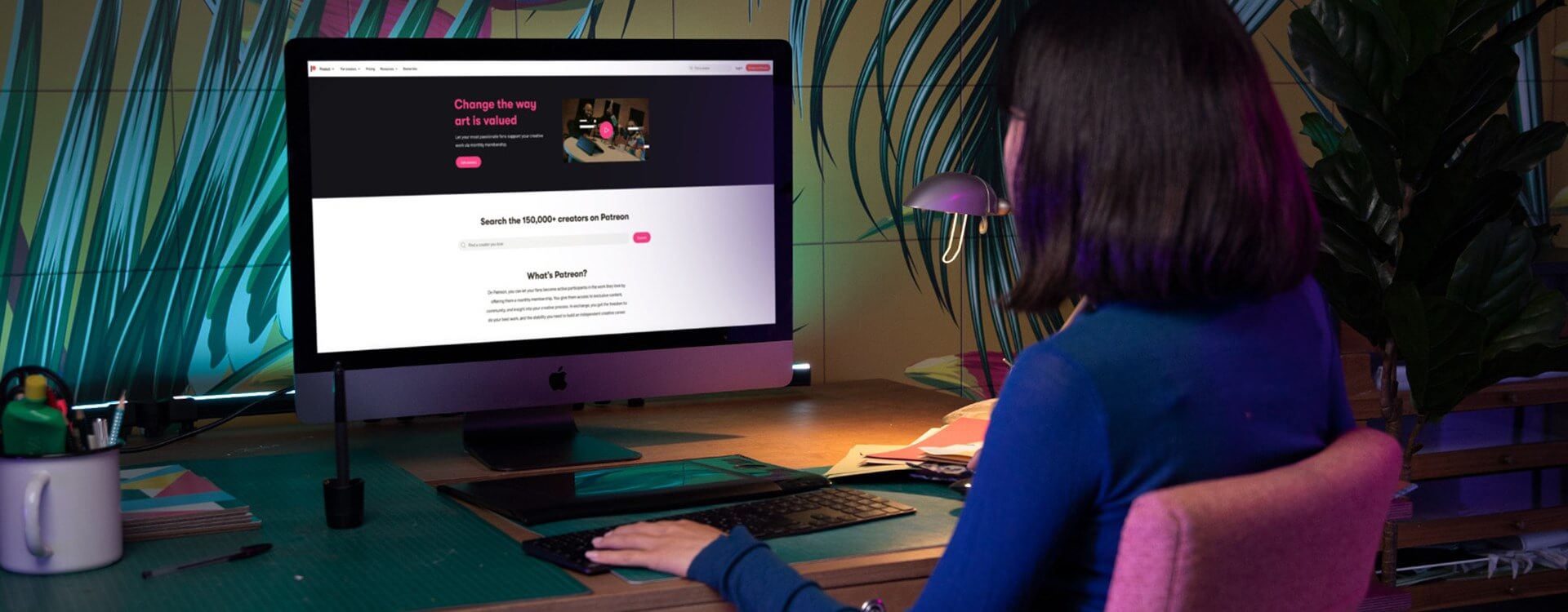Highlights
Table of Contents
Explore article topics
Many creative people often daydream about making money from their work. For video creators, YouTube’s AdSense platform, which allows channel owners to monetize content with ads, is one way of doing that. But, monetizing through YouTube has its dangers, in the form of copyright strikes. So, creators look for different monetization platforms, and one popular option is Patreon.
With freelance work on low demand caused by the pandemic and public lockdown, creatives and patrons have been flooding the platform to make up for lost revenue by fundraising directly from their fanbase.
Before getting into how Patreon creators can use the platform to monetize content, it’s helpful to understand what it really is. While AdSense’s ad-driven system can work well for YouTubers, especially those with a lot of views and subscribers, Patreon is a larger monetization ecosystem. Anyone making any type of content, from Twitch streamers to YouTube tutorialists, musicians, and beyond can use Patreon to make money off their content.
Think of Patreon as a marketplace that financially connects creators with fans (“patrons”) or subscribers. To monetize content, creators give 10 percent of their revenue to Patreon. Half of that amount is a platform fee, paid for using Patreon; the other half is a payment processing fee—that is, the fee Patreon charges creators for handling payments from patrons.
While Patreon is, on a very basic level, a marketplace, it’s also transforming into a platform that offers new products and services to creators to better market their work. With that said, Patreon doesn’t do everything for creators. After creating content, Patreon users still have to get the word out on their own, typically through social media.
Setting Up a Patreon Account
Before deciding to set up a Patreon account, think about the content you are making. Is it compelling enough that it could find a paying audience? If the content is unique and made with quality in mind, creating a Patreon account is worth a shot.
After signing up, you will have to describe yourself and the type of work you create. Filmmakers and video creators, for instance, should describe the type of videos and films they make. A short, snappy description of the style or genre of content is also ideal.
For example, a wellness or fitness expert publishing videos on YouTube or even Instagram will want to describe the type of work they do. And, like any good marketing or branding, this description should separate their work from others. Think about what makes your content unique, and build that into your snappy description.
Much like Kickstarter, creators can also upload an intro video. This intro describes your creative project for the intended audience, and you can link your social media channels to your Patreon profile.
Set Your Goals
Creative people often wonder how monetizing their content would change their lives. Maybe it’s something like spending more time on the thing they love instead of working a 9 to 5 job. Or perhaps a musician would use the monthly revenue to found the record label they’ve been dreaming about for years. Patreon encourages creators to think in terms of such goals.

The easiest way to think of these benchmarks is as a combination of financial and creative goals. Creators are also encouraged to clearly state these goals to subscribers, as it gives them something concrete to work toward, but also helps patrons understand exactly what they’re signing up for with their monthly subscription.
When creating a Patreon account, think about drawing up a list of goals that you want to share with your subscribers. If you’re a videographer, for example, one of your goals could be to make $2,500 to finance new camera lenses and a light kit to make higher quality videos. A goal like this would appeal to subscribers who might already like your video content since you’re openly committing to making your work even better.
Power your business's creativity with Artlist Business
Monetizing Your Content
As noted above, Patreon creators can monetize their content with either monthly subscriptions or by individual release. Figuring out what will work best might take a bit of thought, so don’t rush into a monthly work calendar if you worry you can’t handle it schedule-wise. On the other hand, this type of schedule might even focus your efforts, resulting in better, more consistent content.
The benefit of a monthly subscription is that creators will know—assuming you have a good audience—about how much money you will make per month. As with Kickstarter, you can set up subscription tiers (or, “reward levels”), with higher monthly fees that give patrons perks like more content or other exclusive deals.
Going back to the wellness example above, a $1 monthly subscription could be a “thank you” for patrons for supporting you on YouTube and/or Instagram. A $5 subscription, on the other hand, might give patrons an exclusive wellness video, or even something like an early release, which is popular amongst Patreon users. The drawback to such an arrangement is that it does create extra work for creators and imposes some deadlines for delivering that work to patrons in the $5 subscription category.
By contrast, taking payment by the individual release of content means there are no deadlines to think about. In this subscription, patrons pay creators when they deliver their content, whether that is a video, a game, a comic, and so on.
Marketing Your Content & Engaging Fans
Although Patreon is a marketplace and payment platform, it is also a type of social media on which creators and subscribers interact. So, to get the most out of Patreon as a creator, it’s important to market your brand and engage with audiences, both on and off Patreon.
One cool way of engaging audiences and enhancing your brand is by giving existing subscribers and potential patrons a sneak peek into your creative process. If you’re a musician who makes your own music videos, like pop artists such as FKA Twigs and Grimes, you could take your audience into that process with behind-the-scenes videos not seen on YouTube. Snapchat can be a good social media tool for this type of audience engagement.
A simple yet effective type of engagement is simply talking with fans in the Patreon comments section, or on YouTube and Instagram posts. Another possibility is doing a live Q&A with your fans. Sure, it can be time-consuming, but it does show you are interested in your supporters.
And if you’ve got some serious fans of your video content, think about giving them a shout-out in the credits. This is classic fan appreciation, but Patreon can help make it tangible with something as simple as a shout-out or digital and physical goods like merchandise (t-shirts, stationery, official wallpaper, etc.).
Keep in mind that creating digital and physical goods can also be time-consuming and costly. But, if you find the right mix, and it doesn’t break your schedule or bank account, then it’s likely that these offerings will help your Patreon account make money and grow.
Some Things to Remember
Creating a successful Patreon account to monetize your content will require some trial and error. This is not a bad thing. Using Patreon might actually help you fine-tune the content you create, and will hopefully teach you how to build and maintain fan and subscriber bases.
A Patreon account will also encourage you to think about how to best brand your content and market it on social media platforms. If you’re trying to make creative work into a business, whether it be part- or full-time, a Patreon account will help you do it.
Remember that your content needs to be good and unique. Before monetizing it on a platform like Patreon, work on your craft, whatever it may be, and make sure it has appeal to potential fans.
If you’re making short documentaries about environmental issues that are close to your heart, for example, make sure your films are compelling. If they are, there could be an audience out there waiting to support you.
The pandemic has forced creatives to adapt in many different ways, like forcing you to work more from home. In the case of Patreon, connecting and engaging more often with your audience is always an excellent way to grow your audience and develop as a creator.
Share this article
Did you find this article useful?
Related Posts
- By Jessica Peterson
- 5 MIN READ
- By Artlist
- 3 MIN READ
- By Daniela Bowker
- 9 MIN READ
Latest Posts
- 25 Apr
- By Josh Edwards
- 4 MIN READ
